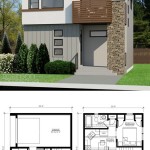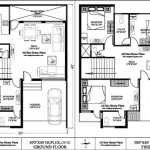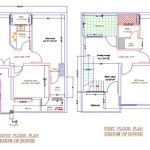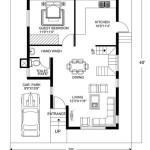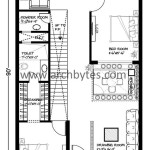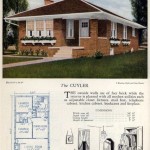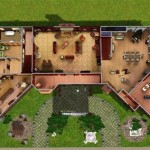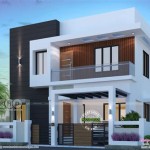```html
Cabin Plans Under 500 Square Feet: Compact Living Redefined
The allure of a cabin, a sanctuary nestled in nature, is undeniable. However, the dream doesn't always require sprawling acreage or exorbitant construction costs. Cabin plans under 500 square feet offer a compelling alternative, providing a comfortable and functional living space within a compact footprint. These plans necessitate careful consideration of design and functionality, prioritizing efficiency and maximizing every square inch. This article explores the benefits, considerations, and design elements involved in creating a livable and enjoyable cabin within this limited space.
The increasing popularity of small-scale living is driven by several factors, including affordability, environmental consciousness, and a desire for simplified lifestyles. A smaller cabin translates to lower construction costs, reduced maintenance, and a smaller environmental impact. Furthermore, many individuals are drawn to the idea of a minimalist lifestyle, focusing on experiences and connections rather than material possessions. A cabin under 500 square feet perfectly embodies this philosophy, encouraging a more intentional and less cluttered existence.
Before embarking on a building project, careful planning is paramount. This involves defining the intended use of the cabin, the number of occupants, and the specific needs and preferences of the inhabitants. Will it be a weekend retreat, a full-time residence, or a rental property? Understanding these factors will dictate the design choices and the allocation of space within the limited square footage. For instance, a full-time residence would necessitate a more comprehensive kitchen and ample storage solutions compared to a weekend getaway cabin.
Key Considerations for Cabin Plans Under 500 Square Feet
Designing a successful cabin within this spatial constraint requires meticulous planning and a focus on efficiency. Several key considerations must be addressed to ensure a comfortable and functional living environment.
Space Optimization: This is the cornerstone of small cabin design. Every square foot must be thoughtfully utilized. Multifunctional furniture, such as sofa beds and storage ottomans, are essential. Vertical space should be leveraged through shelving and loft areas. Open floor plans create a sense of spaciousness, eliminating unnecessary walls and partitions. Consideration should be given to incorporating built-in storage solutions wherever possible, minimizing the need for bulky freestanding furniture. Thoughtful placement of windows and doors can also contribute to the perception of a larger space.
Material Selection: The choice of materials can significantly impact the overall aesthetic and functionality of the cabin. Natural materials, such as wood and stone, lend a rustic and organic feel, seamlessly blending the structure with its natural surroundings. Light-colored walls and ceilings can visually expand the space, while strategically placed mirrors can create the illusion of depth. Durable and low-maintenance materials are crucial for ensuring the longevity of the cabin, especially in harsh weather conditions. Emphasis should be placed on sustainable and locally sourced materials whenever feasible, minimizing the environmental footprint of the project.
Efficient Systems: In a small cabin, efficient systems are crucial for minimizing energy consumption and maximizing comfort. This includes energy-efficient appliances, proper insulation, and a well-designed heating and cooling system. Renewable energy sources, such as solar panels and wind turbines, can further reduce the environmental impact and long-term operating costs. Water conservation is also essential, with low-flow fixtures and rainwater harvesting systems being viable options. Septic systems or composting toilets may be necessary depending on the location and local regulations. Careful planning of these systems is vital for creating a sustainable and comfortable living environment within the limited space.
Design Elements for Maximizing Space and Functionality
Various design elements can be incorporated into cabin plans under 500 square feet to enhance space utilization and functionality.
Loft Areas: Lofts are a highly effective way to add sleeping or storage space without increasing the ground footprint. They can be accessed via a ladder or a compact staircase, offering a separate and private area within the cabin. Lofts are particularly well-suited for sleeping areas, allowing the main living space to remain open and uncluttered. Careful consideration should be given to headroom and safety when designing a loft area. Sufficient ventilation and lighting are also essential for ensuring a comfortable and functional space.
Open Floor Plans: As mentioned previously, open floor plans are fundamental to creating a sense of spaciousness in a small cabin. Eliminating unnecessary walls and partitions allows for a more fluid and interconnected living space. This can be achieved by combining the living, dining, and kitchen areas into a single open space. Visual separation can be achieved through the strategic placement of furniture, rugs, and changes in floor level. Open floor plans promote natural light and ventilation, further enhancing the feeling of spaciousness.
Multi-Functional Furniture: Furniture that serves multiple purposes is essential for maximizing space in a small cabin. Examples include sofa beds, storage ottomans, folding tables, and chairs that can be easily stored when not in use. Built-in furniture, such as benches with storage underneath, can also be incorporated into the design. The key is to select furniture that is both functional and aesthetically pleasing, contributing to the overall design of the cabin. Modular furniture systems can also be a valuable option, allowing for flexibility and customization to suit individual needs.
Navigating the Regulatory Landscape
Building a cabin, regardless of its size, requires adherence to local building codes and regulations. These regulations vary depending on the location and may cover aspects such as zoning, building permits, septic systems, and environmental protection. It is crucial to research and understand the specific regulations in the area where the cabin will be built. Consulting with local building officials and contractors is highly recommended to ensure compliance with all applicable codes. Failure to comply with these regulations can result in costly delays and potential legal issues. A thorough understanding of the regulatory landscape is an essential step in the planning process.
Furthermore, consider the environmental impact of the construction project. Sustainable building practices and materials should be prioritized to minimize the environmental footprint of the cabin. Proper site preparation and erosion control measures are also important for protecting the surrounding ecosystem. Obtaining the necessary environmental permits may be required, depending on the location and the scope of the project. Responsible building practices are essential for ensuring the long-term sustainability of the cabin and its surrounding environment.
Financing a cabin project can be achieved through various avenues, including personal savings, loans, and grants. The cost of building a cabin under 500 square feet can vary significantly depending on the location, materials used, and the complexity of the design. Obtaining multiple quotes from contractors is recommended to ensure competitive pricing. A detailed budget should be created, outlining all anticipated costs, including materials, labor, permits, and landscaping. Contingency funds should also be included to cover unexpected expenses. Careful financial planning is essential for ensuring that the project remains within budget and on schedule.
Cabin plans under 500 square feet present a unique opportunity to embrace minimalist living and connect with nature. By prioritizing careful planning, efficient design, and sustainable practices, it is possible to create a comfortable, functional, and aesthetically pleasing living space within a compact footprint. The key is to maximize every square inch, leverage vertical space, and select multi-functional furniture. Adherence to local building codes and regulations is paramount, and responsible environmental practices should be prioritized. With thoughtful planning and execution, a small cabin can provide a fulfilling and enriching living experience.
```
Plan 76166 Tiny Floor Under 500 Sq Ft Has 2 Bedrooms And 1

Cabin Style House Plan 1 Beds Baths 500 Sq Ft 924 7 Houseplans Com

Image Result For 500 Sq Ft House Plans 1 Bedroom Small Tiny

Small Floor Plans On House

500 Square Foot Smart Sized One Bedroom Home Plan 430817sng Architectural Designs House Plans

Plan 76166 Tiny Floor Under 500 Sq Ft Has 2 Bedrooms And 1

Romeo 500 Sq Ft Log Cabin Kit Home Kits Mountain Ridge

Tiny Ultra Modern House Plan Under 500 Sq Ft 1 Bed And Bath Offer Compact Living Cottage Plans Contemporary Decor

House Plans Under 500 Square Feet

500 Sq Ft House Plans Small Floor

